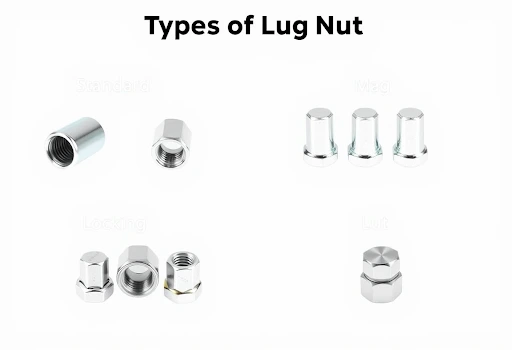Types of Mag Nuts
From cone seat (acorn) lug nuts to flat seat (mag) lug nuts with an incorporated centering device for wheel stability to extended thread lug nuts especially made to secure aftermarket wheels, lug nuts come in many forms to fit the particular needs of every wheel and vehicle.
A mag nuts is what?
When handling HVAC chores like sheet metal screw installation, hex magnetic nut drivers transform efficiency and precision. These tools reduce chance of completely dropping screws by securely gripping fasteners during installation by including a hex socket with an inbuilt neodymium magnet, so enabling faster and safer work. Fastener identification is also much easier since there are several sizes to fit varying nut and bolt diameters!
Other forms of lug nuts are all-metal prevailing torque lug nuts, which use opposing forces to lock into place and provide more locking action than mag lug nuts but require higher installation torques and can damage threads if tightened too tightly. Slotted nuts used with cotter pins are another type of lug nut.
Depending on your needs, choosing mag wheel, shank-style or conical seat lug nuts that encompass wheel centering can be difficult as picking the suitable type of lug nut is of great relevance when matching wheels and studs together. While alternatively you might wish spherical or conical seat lug nuts sit flush against wheel washer face to allow better wheel centering on mounting flange; mag wheel or shank style lug nuts can center the wheel onto mounting flange by inserting into stud bores rather than sitting flat against wheel lug holes.
Mag’s Seat Mag Nuts
Lug nuts range in both form and size. Though commonly divided into three kinds based on how they make contact with the stud seat on a wheel rim, each type has advantages and disadvantages depending on their application to a wheel application.
Flat seat (also called mag style) lug nuts offer an open seating area and require separate washers for installation; spherical (ball-style) and conical/tapered seat lug nuts have a rounded seating surface.
Although its coating may form a hydraulic barrier between mating surfaces and can make torque attainment more difficult, anti-seize lubricant can greatly smooth assembly of the wheel and lug nut. Any lug nut put in place for two weeks or more should thus be taken off and re-lubricated with anti-seize oil before being replaced. This advice particularly relates to any tightened using an impact wrench.
Cone seat lug nuts
Lug nuts differ depending on seating style and thread size. Shank seat (also known as mag lug) nuts have flat surfaces that provide exact alignment on specialty wheels that need alignment; they often use washers to center them and ensure extra thread engagement; cone seat lug nuts have tapered seating areas usually at an acute 60-degree angle for use on most wheel applications.
On some aluminum wheels, however, bulging style cone seat lug nuts may offer a solution because of their larger seating surface. Although less prevalent, these special nuts prevent bottoming-out and failing to deliver sufficient clamping force when placed on regular lug nuts that do not apply enough clamping force to clamp around them correctly.
Another lug nut choice are Extended Thread (ET) lug nuts, which have short shanks for usage in applications lacking enough thread engagement with standard lug nuts. Although ET lugs do greatly lower the likelihood of stripping or misaligned problems, installing and removing them call for certain tools.
Open-end Lug nuts
Usually used on aftermarket wheels and some racing lug nuts for increased protection from stripping or loosening of lug nuts by requiring the use of an exclusive tool, these lug nuts include spline grooves on both their head and sides that take a specific key for enhanced security. For more use on track days, they can be found on some racing lug nuts as well as aftermarket wheels.
Using a normal lug nut on a spline drive lug nut could cause it to bottom out on the stud and neglect sufficient gripping force, therefore separating the wheel from its hub. Always use the lug nuts suitable for your wheel stud length to stop this from happening.
Long Thread Lug Nuts
Each of the several types of lug nuts is meant for a different use. While flat lug nuts have a flat mounting surface akin to that found on big washers, acorn or conical lug nuts have tapered ends which help them in centering themselves correctly in lug holes on wheels.
Whether the type of lug nuts you use, it is imperative that they be placed according to torque standards to guarantee proper tightening and to avoid damage to studs or wheels that can cause loosening or loss of the nut.
Whether it’s safe to apply lube to lug nut threads is up for discussion. Some consumers, do-it-yourselfers and self-described Internet forum gurus swear by it; manufacturers and engineers warn against it, though, because lubrication produces an unsealed hydraulic barrier between mating surfaces that limits appropriate torque application.
Read also: Magnesium Mag Nuts Aluminum
